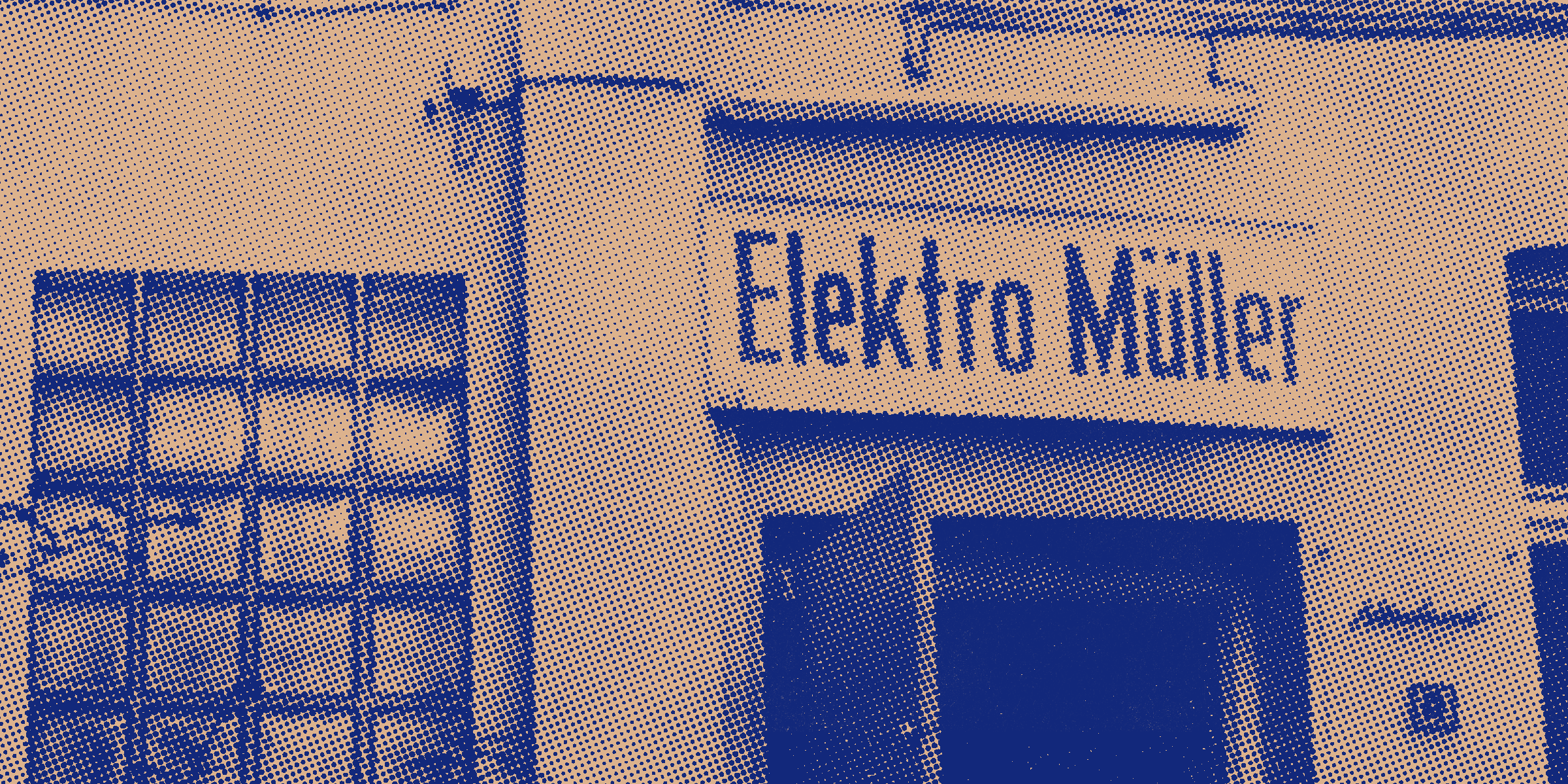Kling Klang Studios: the spiritual home of Kraftwerk
The sound of Kraftwerk is a global phenomenon, and it had a special place in stark room in Düsseldorf. The story of Kling Klang.

Kraftwerk, the German electronic music act, is renowned for its significant influence on the music industry. The band's innovative approach to music production, combined with their unique sound, has left an indelible mark on the world of music. One of the most iconic elements associated with Kraftwerk is the Kling Klang Studio, a place where the band's groundbreaking music was born and nurtured.
The Birth of Kling Klang Studios
The Kling Klang Studio was originally located at Mintropstraße 16 in Düsseldorf, Germany, adjacent to Düsseldorf Hauptbahnhof. This unassuming building was the birthplace of some of the most influential electronic music in history. The studio was small, just 50 square meters, but it was within these walls that Kraftwerk created their unique sound.
Kraftwerk was formed at the end of the 1960s by Ralf Hütter and Florian Schneider. The name Kraftwerk translates to "power station" in English, a fitting name for a band that would generate such a powerful influence on the music industry.
The Significance of Kling Klang Studios
The significance of the Kling Klang Studio extends beyond its physical location. It was a creative hub where Kraftwerk developed their unique sound and experimented with new technologies. The studio was filled with equipment that was either custom-made for the band or even created by the band members themselves.
The studio was also a symbol of Kraftwerk's commitment to their craft. The band was known for their secretive nature, rarely giving interviews or making public appearances. The Kling Klang Studio was their sanctuary, a place where they could focus on their music without distractions, turning out iconic classics like the 21-minute long "Autobahn", or my childhood favourite "The Robots", among many others.
The Influence of Kraftwerk and Kling Klang Studios
Kraftwerk's influence on the music industry is undeniable. Their innovative use of electronic instruments and their unique sound have inspired countless artists across various genres. From David Bowie to Depeche Mode, from the Human League to Daft Punk, many artists have cited Kraftwerk as a major influence.
Kraftwerk's music has also been sampled by many artists. For example, Coldplay used the melody of Kraftwerk's "Computerworld" for their hit song "Talk". This is a testament to the enduring appeal of Kraftwerk's music and the timeless quality of the sounds created in the Kling Klang Studio.
The Legacy of Kling Klang Studios
In 2009, the band relocated the studio to Meerbusch-Osterath, around 10 kilometers west of Düsseldorf. However, the legacy of the original Kling Klang Studio lives on. In 2015, the old studio was reopened and made available for electronic musicians to use as part of a program called "Live at Electro Müller".
The legacy of the Kling Klang Studio is not just about the music that was created there, but also about the spirit of innovation and creativity that it represents. It is a testament to Kraftwerk's pioneering spirit and their commitment to pushing the boundaries of music.
Kraftwerk and Kling Klang Studios in Popular Media
Kraftwerk and the Kling Klang Studio have been featured in various media, including popular YouTube videos. One such video, titled "What's happening in the old Kraftwerk Kling Klang Studio these days? | Muzikxpress 002," provides a glimpse into the former studio and its history.
The video's host, Twan, visits the old Kling Klang Studio and shares some interesting facts about Kraftwerk. He mentions that the band was one of the most influential bands of all time and the impact they had on the music industry. He also provides a tour of the old studio, giving viewers a glimpse into the place where Kraftwerk created their iconic sound.
Kraftwerk's Impact on the Music Industry
Kraftwerk's influence on the music industry is far-reaching and profound. Their innovative use of electronic instruments and their unique sound have inspired countless artists across various genres. Kraftwerk's beats laid the foundations for club music: for hip-hop, synth-pop, techno, and house. The sounds they invented have been sampled by hundreds of artists, from Madonna to R.E.M.
During its two decades of prime creativity, Kraftwerk intersected with and influenced a staggering array of genres and phases: progressive rock, glam, krautrock, disco, post-punk, synthpop. Kraftwerk's pioneering approach, using synthesizers and sequenced drum arrangements to evoke robotic or industrial rhythms, became the blueprint for Detroit musicians such as Juan Atkins.
Kraftwerk was not just transforming the dreary everyday reality of commuting into a commentary on the slipstream of post-war society, framing technology as a quasi-utopian development. They were also forging a new future for pop, changing the sounds and techniques of how music was made.
In conclusion, the legacy of Kraftwerk and the Kling Klang Studio is a testament to the power of innovation and creativity in music. Their influence continues to resonate in the music industry today, proving that the sounds created in the Kling Klang Studio are timeless.
Conclusion
Kling Klang Studio and Kraftwerk are synonymous with innovation and creativity in the music industry. The studio was not just a place for recording music; it was a space where new ideas were born, where boundaries were pushed, and where the future of music was shaped. The legacy of Kling Klang Studio continues to inspire musicians today, proving that the influence of Kraftwerk and their iconic studio is timeless.
The band's commitment to their craft, their innovative approach to music production, and their unique sound have left an indelible mark on the world of music. The significance of the Kling Klang Studio extends beyond its physical location. It was a creative hub where Kraftwerk developed their unique sound and experimented with new technologies.
The legacy of the Kling Klang Studio is not just about the music that was created there, but also about the spirit of innovation and creativity that it represents. It is a testament to Kraftwerk's pioneering spirit and their commitment to pushing the boundaries of music.
The studio was also a symbol of Kraftwerk's commitment to their craft. The band was known for their secretive nature, rarely giving interviews or making public appearances. The Kling Klang Studio was their sanctuary, a place where they could focus on their music without distractions.
The influence of Kraftwerk and the Kling Klang Studio continues to be felt in the music industry today. Their innovative use of electronic instruments and their unique sound have inspired countless artists across various genres. From David Bowie to Depeche Mode, from the Human League to Daft Punk, many artists have cited Kraftwerk as a major influence.
The legacy of the Kling Klang Studio lives on. In 2015, the old studio was reopened and made available for electronic musicians to use as part of a program called "Live at Electro Müller". This initiative allows new generations of musicians to create music in the same space where Kraftwerk once innovated, keeping the spirit of the Kling Klang Studio alive.
References
- Kling Klang Studio - Wikipedia: An overview of the Kling Klang Studio, including its founding and significance to Kraftwerk.
- Kling Klang Studio - Wikiwand: Another overview of the Kling Klang Studio, with additional details about its name and location.
- Kraftwerk - Wikipedia: A comprehensive overview of Kraftwerk, including the band's formation and influence on electronic music.
- The story of Kraftwerk - Classic Pop Magazine: A detailed history of Kraftwerk, including the establishment of the Kling Klang Studio.
- The Legend of Kraftwerk — Google Arts & Culture: An exploration of Kraftwerk's sound lab, the Kling Klang Studio, and its location in Düsseldorf.
- Kraftwerk's Unrecognized Masterpiece | Video Essay: A video essay discussing Kraftwerk's work, including their time at the Kling Klang Studio.
- Kraftwerk - Kling-Klang-Studio: A short video featuring the Kling Klang Studio.
- KRAFTWERK - Great Documentary Full Ver.: A full-length documentary on Kraftwerk, likely including details about the Kling Klang Studio.
- First Techno (Kraftwerk 1970): A video featuring one of Kraftwerk's early concerts, possibly recorded at the Kling Klang Studio.
- The Story of Kraftwerk Part 1: The first part of a lecture series on the history of Kraftwerk, likely including information about the Kling Klang Studio.


